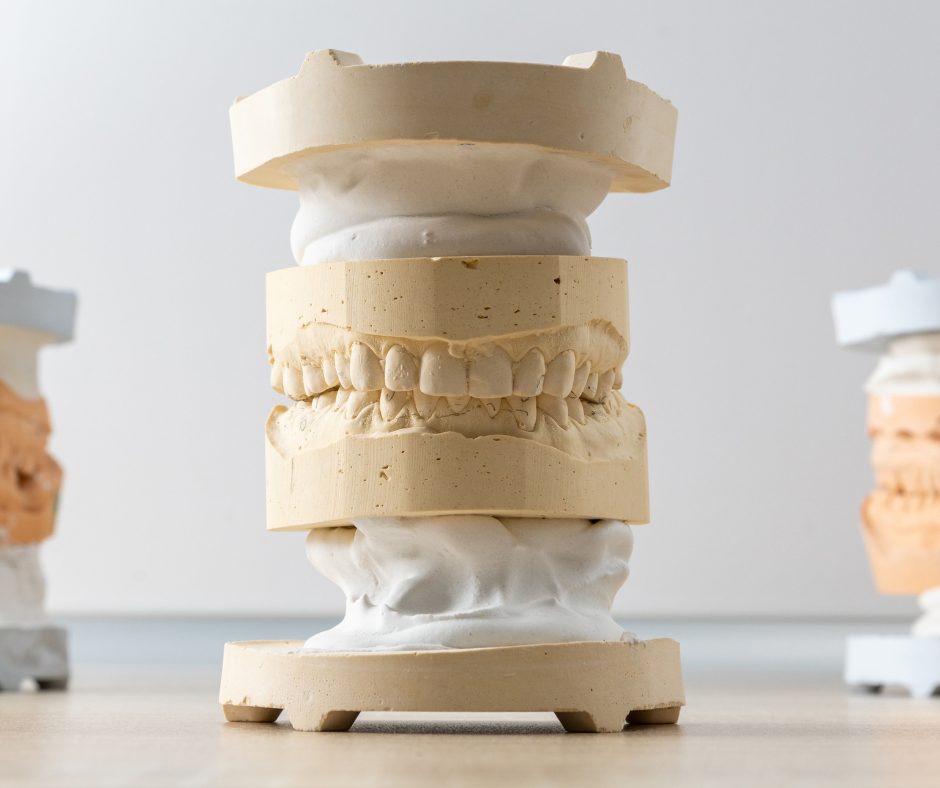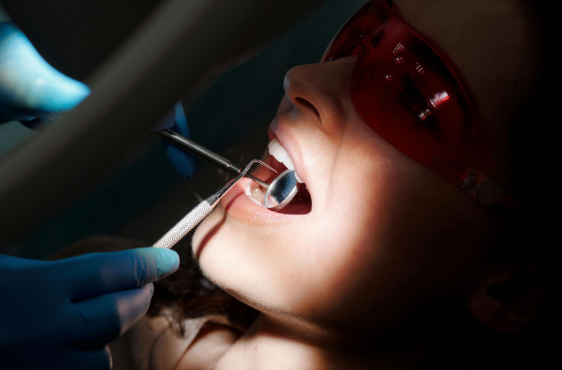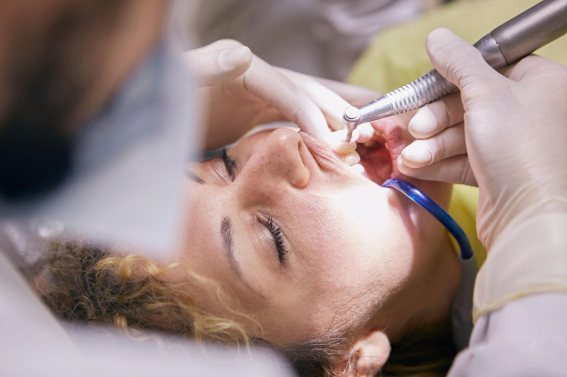Gateway Family Dental Blog
What Are Dental Impressions?

Dental impressions are exact molds of your teeth that are used in various types of dental work. If you’ve ever taken a trip to the dentist to get braces, retainers, veneers, crowns, bridges, or mouth guards, you likely needed a dental impression taken first.
These molds will help your dentist ensure that the dental appliance or restorative material will be a perfect fit around your teeth and align with your bite. However, dental impressions have many other uses.
Keep reading to learn more about this technique and its importance in aiding your dentist.
How Are Dental Impressions Made?
A dental impression is a negative mold of your teeth that your dentist gets by having you bite down on a tray full of a semi-liquid substance that hardens. Dentists study these models to see how your dental arches fit together, as well as the size and relationship of your teeth and gums.
Creating a dental impression is relatively straightforward and far from complicated. Here is a quick overview of three simple steps usually involved when taking a dental impression:
Preparing the Teeth
First, your dental professional may need to file the top and sides of your affected tooth to ensure a secure fit for the crown or bridge. This step might cause some discomfort, mainly if the tooth needs filling before accepting a crown due to a cavity.
Taking the Dental Impression
The actual process of creating a dental impression involves a dense and sticky alginate material. Your dentist dispenses this material into a tray, which is then placed over your teeth.
Removing the Mold
In the last step, the material is removed from your mouth within a few minutes. You might need to rinse your mouth after taking the mold.
Why Are Dental Impressions Important?
Each person's set of teeth is unique, making dental impressions ideal for a comfortable and personally fitting outcome.
Dental impressions are needed in various dental procedures, from cosmetic to reconstructive dentistry. They are extensively used in fitting dental appliances correctly to your individual smile.
One common reason for getting dental impressions is to have a crown or bridge placed in your mouth. If you've suffered a broken, cracked, or even lost tooth, a custom-made crown or bridge is the ideal solution to restore your smile. Therefore, dental impressions become an indispensable step in creating a comfortable and perfectly fitted crown or bridge.
What Are Dental Impressions Used For?
Dental impressions help to develop many dental appliances and treatments. They ensure that the dental appliance or restorative material fits snugly in your mouth and aligns with your teeth.
Here are some common uses of dental impressions:
Dental Restorations
They are commonly used in creating crowns and bridges, as well as whitening, mouth guards, and more.
Orthodontic Appliances
Your orthodontist will most likely take dental impressions to ensure that braces and retainers align perfectly with your teeth for effective treatment.
Prosthodontic Treatment
Dental impressions are essential in the design and fabrication of dentures, dental implants, and other complex cases.
What Are the Types of Dental Impressions?
Dental impressions are primarily split into two categories: traditional and digital. Let’s take a closer look at both of them:
Traditional Dental Impressions
Traditional dental impressions are made with specialized putty. This putty, dispensed into a plastic or metal tray, is placed over the patient's teeth and left for a minute or two to harden. Once set, a perfect imprint of the teeth is achieved.
Digital Dental Impressions
Digital dental impressions leverage advanced technology to capture images of your teeth and gums efficiently without using the goopy impression material. A digital handheld wand connected to a computer takes pictures of every angle of your teeth and gums. As the wand scans your mouth, the images are displayed on a computer screen, creating an accurate 3D representation of your teeth. This innovative impression technique is particularly beneficial in complex cases involving tooth migration and malocclusion issues.
Regardless of the type of impression, the procedure typically takes no more than 15 minutes. Once completed, these impressions are sent to a laboratory for further analysis or to create dental restorations or appliances.
Is the Dental Impression Procedure Painful?
In most cases, the dental impression procedure is painless. However, some people may experience discomfort, especially those with a sensitive gag reflex. If discomfort is experienced, dentists can employ various techniques to minimize it.
Can Dental Impressions Pull Teeth Out?
In the majority of cases, dental impressions don't pull teeth out. However, if a tooth is already very loose due to trauma or severe gum disease, there's a slim chance that it might come out.
Are There Risks Associated with Dental Impressions?
In general, there aren't any major risks associated with dental impressions. The slight chance of a loose tooth coming out during an impression is rare, and dentists are fully trained to manage such situations if they do occur.
We understand that some dental procedures—like getting dental impressions taken—might be unsettling. Our purpose at
Gateway Family Dentistry, however, is to ensure your comfort and understanding every step of the way. Are you ready to take the first step towards a more confident and radiant smile?
Get an appointment with us today!




